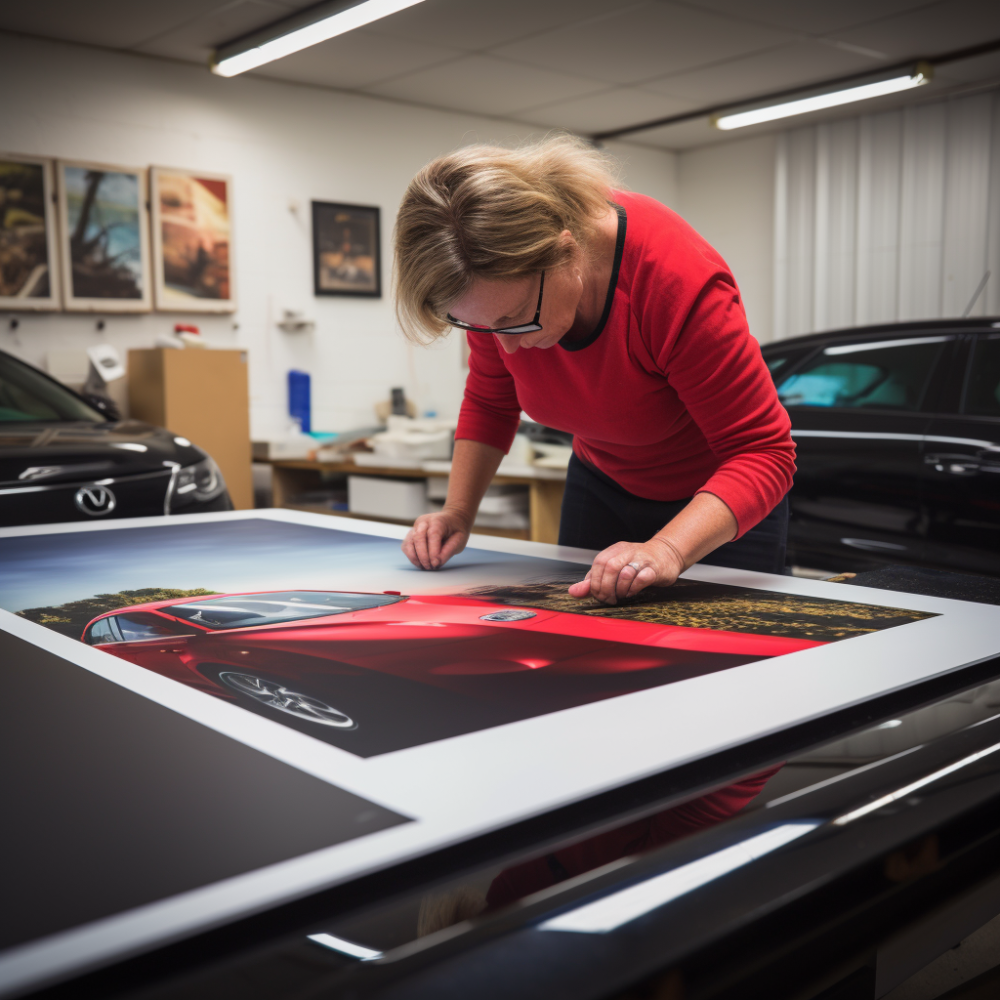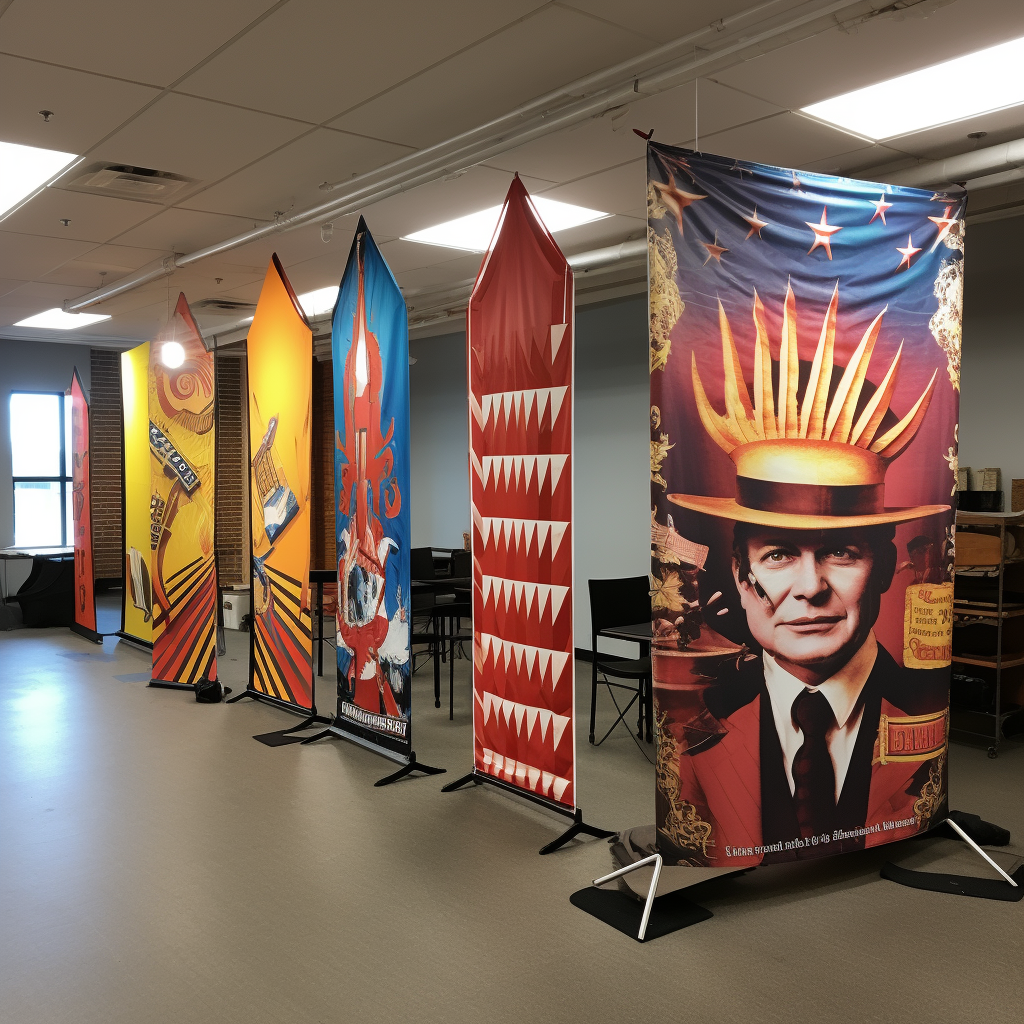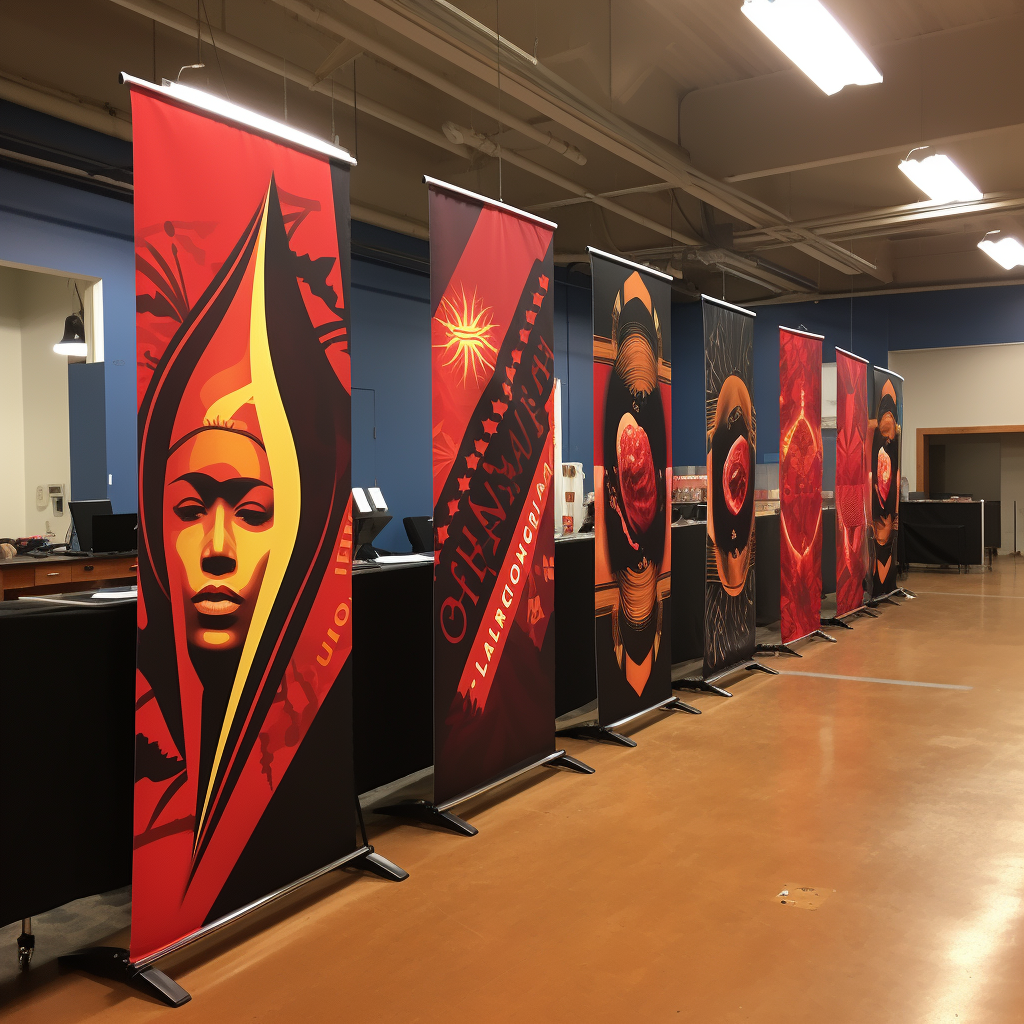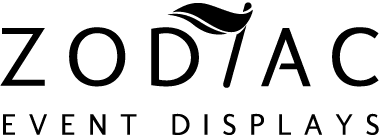
In the fast-paced world of marketing, promotional signage stands out as an indispensable tool for attracting attention and driving engagement. But what is promotional signage? At its core, promotional signage includes any visual display used to convey information, promote products, or enhance brand visibility during events and everyday business operations. This includes banners, pop-up tents, flag banners, trade show materials, and more.
Promotional signage plays a crucial role in both outdoor and indoor settings, making it a versatile choice for businesses looking to make a lasting impression. Whether you’re hosting a trade show, participating in a market, or setting up a pop-up shop, the right signage can help you communicate your message clearly and attractively. The key to effective promotional signage lies in its ability to capture the viewer’s attention quickly and deliver your message succinctly.
At Zodiac Event Displays, we specialize in creating high-quality, dye sublimated fabric displays that not only look great but also stand the test of time. With over a decade of expertise in advertising, our nimble team of professionals is equipped to help your brand shine. Ready to elevate your event marketing? Send us a message to amplify your event marketing.
Types of Promotional Signage
When it comes to promotional signage, there is a diverse range of options available to suit various needs and settings. Understanding the different types can help you choose the most effective signage for your marketing strategy.
- Banners: Whether hung on walls, suspended from ceilings, or displayed on stands, banners are a versatile option for both indoor and outdoor use. They can be customized in various sizes and designs to fit your specific needs.
- Pop-Up Tents: Ideal for outdoor events, pop-up tents provide shelter while prominently displaying your brand. These tents can be customized with logos, colors, and other brand elements to create a cohesive look.
- Flag Banners: These are perfect for grabbing attention from a distance. Available in different shapes like teardrop, feather, and rectangular, flag banners are excellent for roadside events or storefronts.
- Trade Show Materials: From booth backdrops to tabletop displays, trade show materials are designed to make your brand stand out in a crowded space. They are essential for creating an inviting and professional appearance.
- Banner Stands: Compact and portable, banner stands are a great choice for indoor events, conferences, and retail environments. They are easy to set up and take down, making them a convenient option for on-the-go promotions.
- Market Umbrellas: These not only provide shade but also serve as a unique branding opportunity. Customized umbrellas can be used in outdoor markets, cafes, and other settings to enhance brand visibility.
- Pop-Up Signs: These are quick to deploy and highly effective for temporary promotions. Pop-up signs are often used in retail environments to highlight special offers or new products.
Each type of promotional signage has its own set of advantages, making it important to consider your specific needs and goals when selecting the right option. The key is to choose signage that not only captures attention but also effectively communicates your message.
Benefits of Using Promotional Signage

Utilizing promotional signage offers a plethora of benefits that can significantly enhance your marketing efforts. Here are some key advantages of incorporating promotional signage into your strategy:
- Increased Brand Visibility: Promotional signage helps in creating a strong visual presence, making your brand more recognizable. Whether it’s a banner, flag, or pop-up tent, well-designed signage can capture the attention of potential customers and leave a lasting impression.
- Cost-Effective Marketing: Compared to other forms of advertising, promotional signage is relatively inexpensive yet highly effective. Once produced, these signs can be used repeatedly at various events, providing long-term value for your investment.
- Targeted Advertising: Signage allows you to target specific audiences based on the location and context of the display. For instance, trade show materials can be tailored to appeal to industry professionals, while outdoor banners can attract general public attention.
- Enhanced Professionalism: High-quality signage contributes to a polished and professional appearance. This can instill confidence in your audience, making them more likely to trust your brand and engage with your products or services.
- Versatility: Promotional signage is versatile and can be used in a variety of settings, from trade shows and conferences to outdoor markets and retail environments. This flexibility allows you to adapt your marketing approach to different scenarios and maximize your reach.
- Immediate Impact: Effective signage can convey your message quickly and clearly, making an immediate impact on your audience. This is particularly useful in fast-paced environments where you need to grab attention within a short span of time.
- Reusability: Most promotional signs are durable and designed for repeated use. This means you can leverage the same materials across multiple events, ensuring consistent branding and saving on production costs.
Incorporating promotional signage into your marketing strategy can provide a competitive edge, helping you to stand out in crowded environments and effectively communicate your brand message.
How to Design Effective Signage

Designing effective promotional signage is crucial for capturing attention and conveying your message clearly. Here are some essential tips to help you create impactful signage:
- Understand Your Audience: Before you begin designing, it’s important to know who your target audience is. Tailor your design elements, such as colors, fonts, and images, to appeal to the preferences and interests of your intended viewers.
- Keep It Simple: Simplicity is key when it comes to signage. Use concise and straightforward language to communicate your message. Avoid clutter by limiting the amount of text and focusing on key points that you want to convey.
- Use High-Contrast Colors: High-contrast color combinations make your signage more readable from a distance. Pairing light text with a dark background or vice versa can enhance visibility and make your message stand out.
- Incorporate Bold Typography: Choose bold and legible fonts that can be easily read from afar. Avoid overly decorative or script fonts that may be difficult to read. Ensure that your text size is appropriate for the viewing distance.
- Include a Clear Call to Action: An effective signage design should guide viewers on what to do next. Include a clear and compelling call to action, such as “Visit Us,” “Call Now,” or “Learn More,” to encourage engagement.
- Utilize High-Quality Images: Visual elements play a significant role in attracting attention. Use high-resolution images that are relevant to your message and brand. Avoid pixelated or low-quality visuals that can detract from the professionalism of your signage.
- Brand Consistency: Ensure that your signage design aligns with your overall branding. Incorporate your brand colors, logo, and other brand elements to create a cohesive and recognizable look.
- Consider the Viewing Environment: Think about where your signage will be displayed and design accordingly. For outdoor signs, ensure they are weather-resistant and easy to read in various lighting conditions. For indoor signs, consider the layout and placement to maximize visibility.
- Test Your Design: Before finalizing your signage, test it with a sample audience to gather feedback. This can help you identify any areas for improvement and ensure that your design effectively communicates your intended message.
By following these design principles, you can create promotional signage that not only captures attention but also effectively communicates your brand message, driving engagement and achieving your marketing goals.
Best Practices for Signage Placement

Effective signage placement is just as important as the design itself. Strategic placement ensures maximum visibility and impact, helping you reach your target audience more effectively. Here are some best practices for signage placement:
- High-Traffic Areas: Place your signage in locations with high foot or vehicle traffic to increase exposure. Busy streets, shopping malls, and event entrances are ideal spots to capture attention from a large audience.
- Eye-Level Positioning: Position your signage at eye level to ensure it is easily seen and read by passersby. For standing pedestrians, this typically means placing signs around five to six feet off the ground.
- Clear Line of Sight: Ensure that there are no obstructions blocking the view of your signage. Trees, light poles, and other structures can hinder visibility, so choose a spot with a clear line of sight.
- Proximity to Point of Action: Place signs close to where the desired action will take place. For instance, if you want customers to visit a booth at a trade show, place directional signs along the path leading to your booth.
- Illumination: Make sure your signage is well-lit, especially in areas with low lighting or during nighttime. Use backlit displays, spotlights, or LED lights to enhance visibility and attract attention.
- Consistent Branding: Keep your branding consistent across all signs and ensure they align with the overall look and feel of your other marketing materials. This helps in creating a unified brand presence.
- Legal Compliance: Be aware of local regulations and obtain necessary permits for outdoor signage. Compliance with legal standards helps avoid fines and ensures your signs are placed in approved locations.
- Seasonal and Event-Based Placement: Take advantage of seasonal events and holidays by placing relevant signage in areas most frequented during those times. Adjust your placement strategy to align with the ebb and flow of crowd movement.
- Regular Maintenance: Regularly check your signage for wear and tear, and replace or repair as needed. Well-maintained signs project professionalism and reliability, enhancing your brand’s image.
By following these best practices for signage placement, you can ensure that your promotional signs not only reach a wider audience but also effectively convey your brand message, leading to increased engagement and business success.
Case Studies of Successful Signage

Examining case studies of successful signage can provide valuable insights into what works and why. Here are a few notable examples that highlight best practices in action:
- Brand X at Trade Show Y: Brand X utilized a combination of vibrant fabric displays and strategically placed banner stands to dominate their booth at Trade Show Y. By incorporating eye-catching graphics and placing their signage at key intersections within the venue, they saw a 30% increase in booth traffic compared to previous years.
- Local Retailer Z: Facing stiff competition, Local Retailer Z implemented a series of flag banners and market umbrellas outside their store. Positioned at the entrance and along the sidewalk, the signage not only attracted more foot traffic but also created a festive, welcoming atmosphere. This led to a 20% boost in sales during the promotional period.
- Event A: For a major outdoor event, the organizers used custom pop-up tents and pop-up signs to guide attendees and create designated zones for various activities. The clear, well-branded signage helped improve crowd flow and enhanced the overall attendee experience, resulting in positive feedback and increased attendance in subsequent years.
These case studies illustrate the power of well-placed, thoughtfully designed signage in various contexts. By learning from these examples, businesses can better understand how to leverage signage to achieve their marketing goals.
Ready to make your brand stand out? Send a message to info@zodiacdisplays.com to amplify your event marketing, or visit our website at Zodiac Event Displays for more information.









